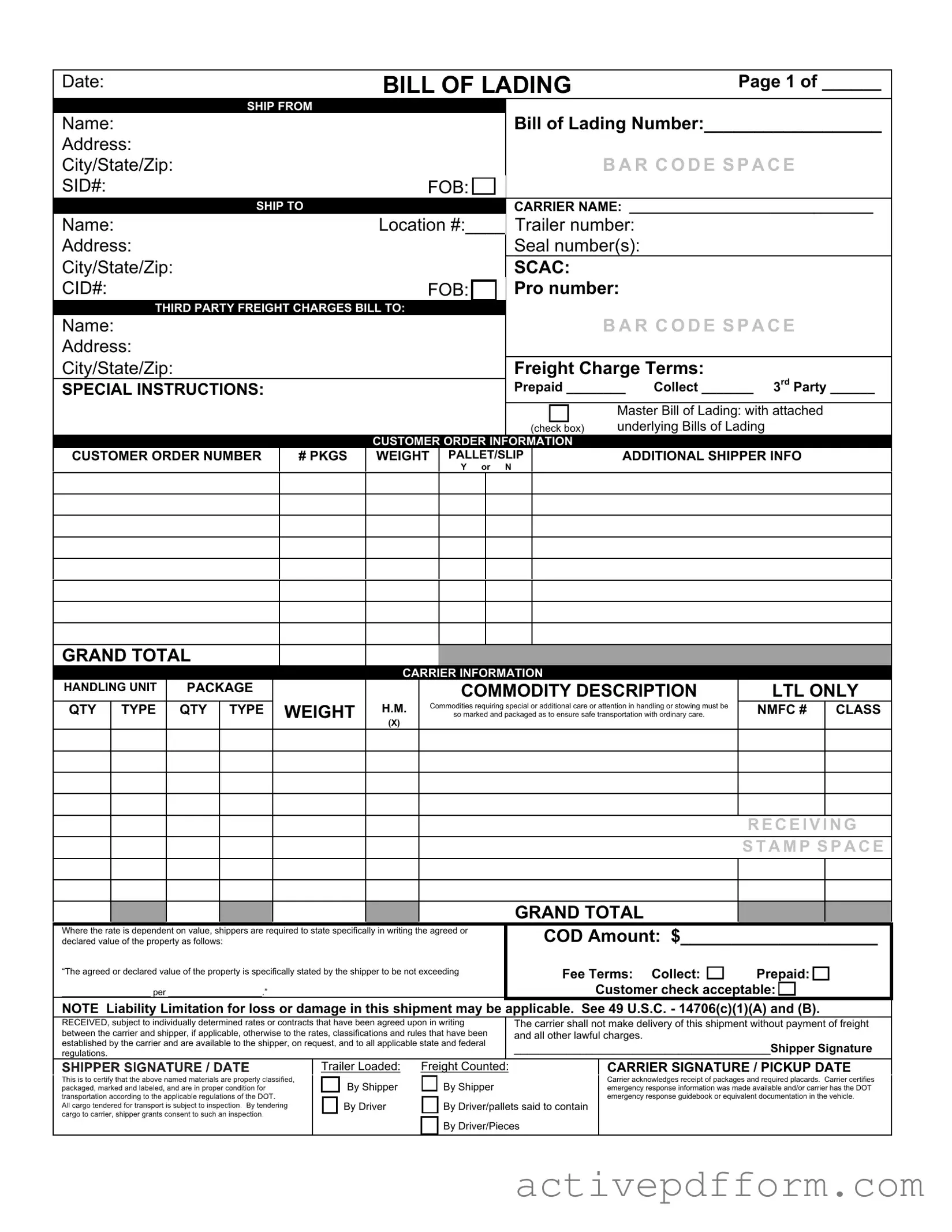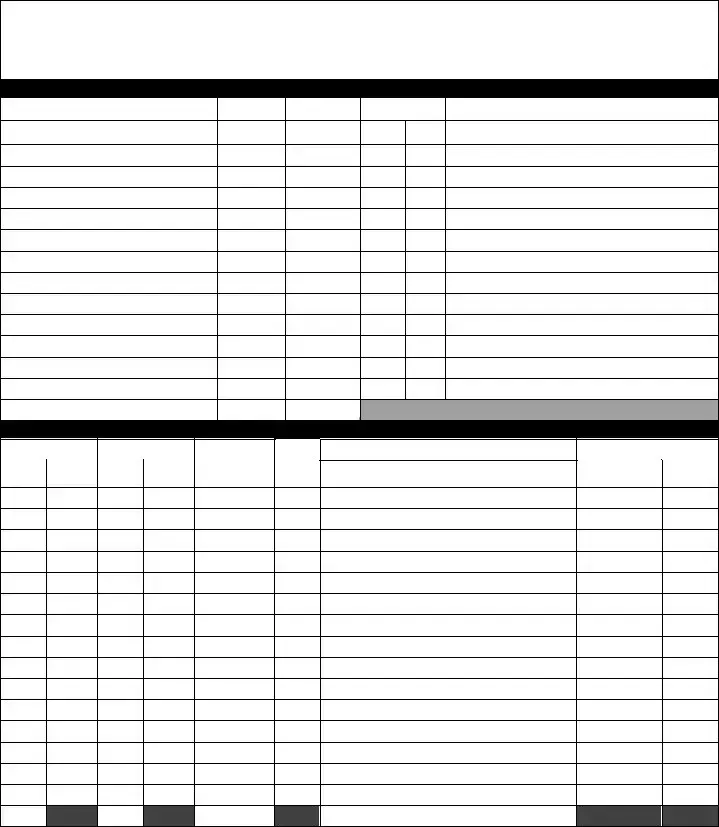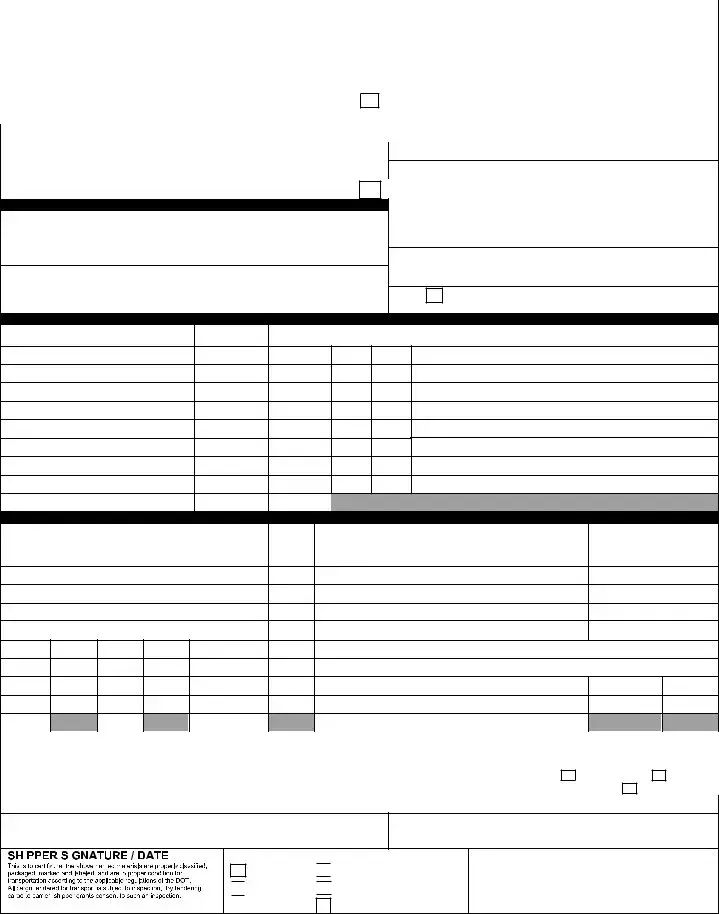What is a Bill of Lading with a Supplement form?
A Bill of Lading with a Supplement form is a document used in the shipping industry. It serves as a receipt for goods, a contract for transportation, and a document of title. The supplement allows for additional information or terms to be included, ensuring all parties have a clear understanding of the shipping arrangement.
Who uses the Bill of Lading with a Supplement form?
This form is primarily used by shippers, carriers, and freight forwarders. It is essential for anyone involved in the transportation of goods, including manufacturers, wholesalers, and retailers. The form helps protect the interests of all parties by clearly outlining responsibilities and expectations.
What information is typically included in the Bill of Lading with a Supplement form?
The form generally includes details such as the names and addresses of the shipper and consignee, a description of the goods being shipped, the shipping route, and the terms of payment. The supplement may contain additional instructions or special handling requirements.
Is a Bill of Lading with a Supplement form legally binding?
Yes, the Bill of Lading with a Supplement form is legally binding. It creates a contract between the shipper and the carrier. Both parties are obligated to adhere to the terms outlined in the document. Failure to comply can result in legal consequences.
How do I complete a Bill of Lading with a Supplement form?
To complete the form, gather all necessary information about the shipment. Fill in the details accurately, ensuring that all required fields are completed. If using a supplement, clearly state any additional terms or conditions. Review the form for accuracy before signing.
Can I modify the Bill of Lading with a Supplement form after it has been issued?
Modifications can be made, but they must be documented properly. Any changes should be noted on the form or in an attached supplement. Both parties must agree to the modifications, and it is advisable to have them documented in writing to avoid disputes.
What should I do if the goods are damaged during shipping?
If goods are damaged, contact the carrier immediately. Document the damage with photographs and written descriptions. Review the Bill of Lading with a Supplement form for any specific instructions regarding claims. You may need to file a claim with the carrier based on the terms outlined in the document.
How long should I keep a copy of the Bill of Lading with a Supplement form?
It is advisable to keep a copy of the Bill of Lading with a Supplement form for at least one year after the shipment has been completed. This helps in case of disputes or claims that may arise later. Retaining records is essential for business and legal purposes.
What happens if the consignee refuses to accept the goods?
If the consignee refuses to accept the goods, the carrier will typically follow the instructions outlined in the Bill of Lading. This may involve returning the goods to the shipper or storing them until further instructions are provided. The shipper may also incur additional charges in such cases.
Are there different types of Bills of Lading?
Yes, there are several types of Bills of Lading, including straight, order, and sea waybills. Each type serves a different purpose and has specific legal implications. Understanding the differences is crucial for selecting the appropriate form for your shipping needs.


 to certify that the above named materials are properly classified, packaged, marked and labeled, and are in
to certify that the above named materials are properly classified, packaged, marked and labeled, and are in proper condition for transportation according to the applicable regulations of the DOT.
proper condition for transportation according to the applicable regulations of the DOT.
 By Shipper
By Shipper
 By Driver
By Driver 
 By Driver/pallets said to contain
By Driver/pallets said to contain